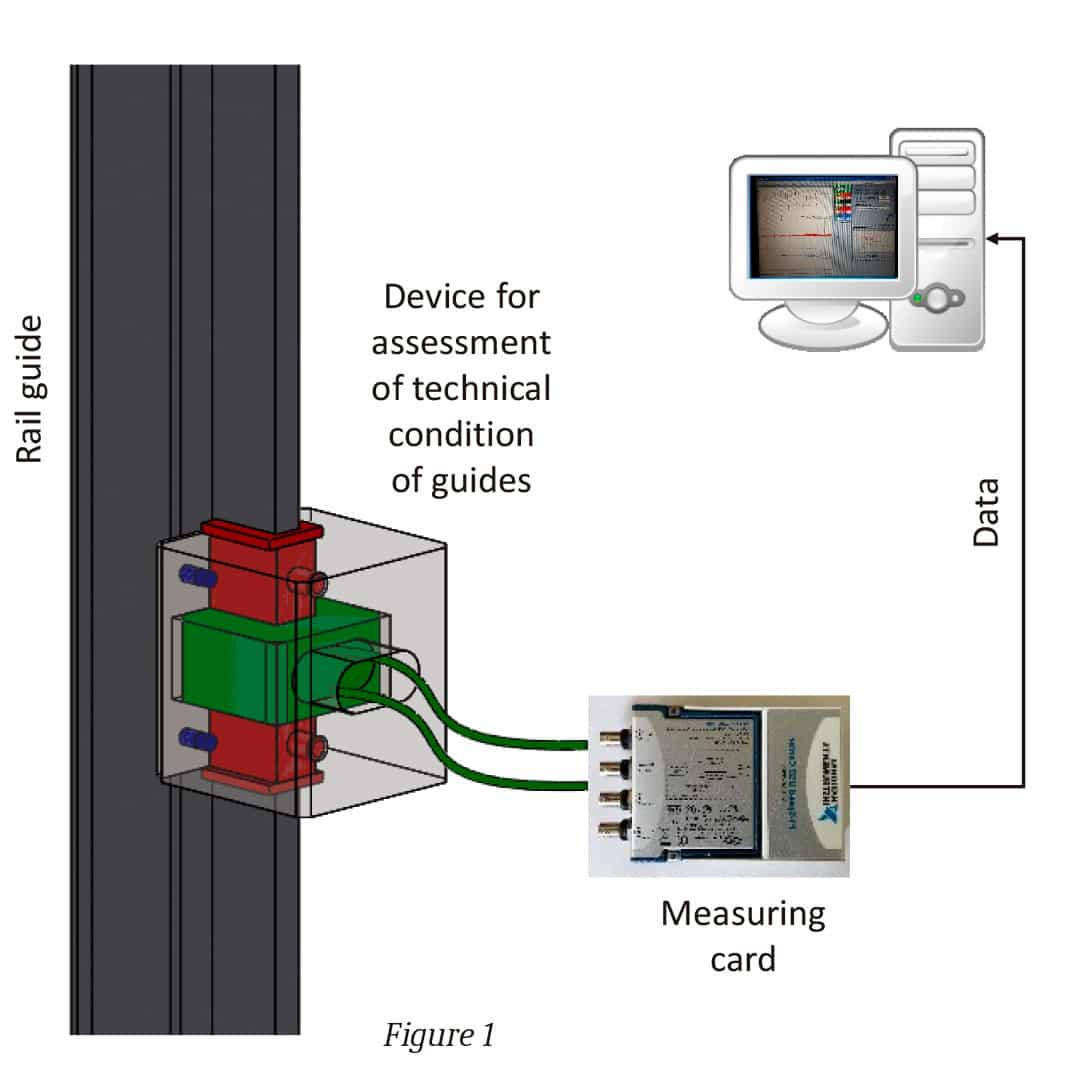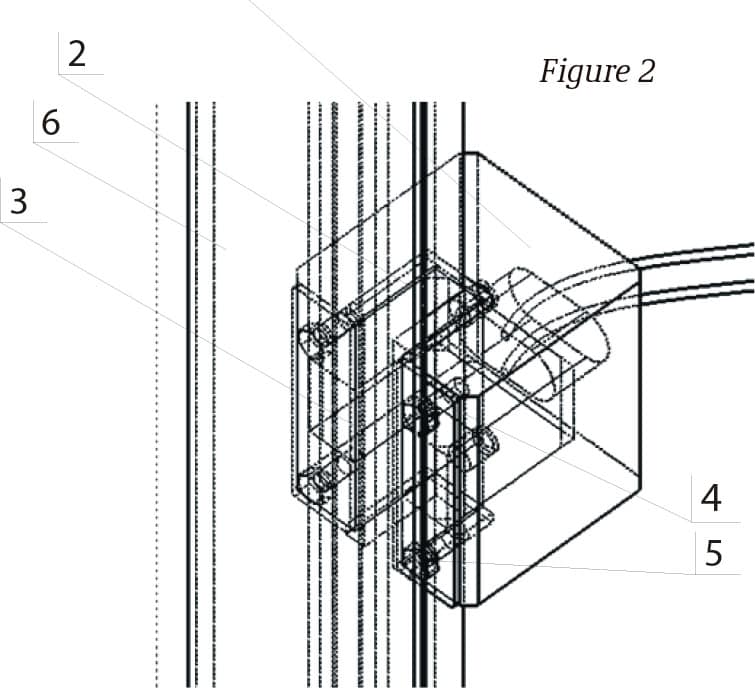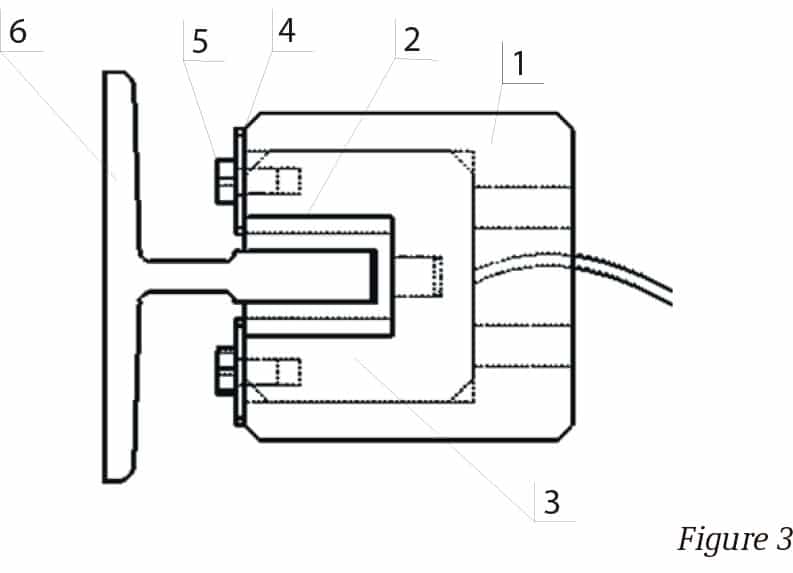Device quickly identifies rails in need of replacement.
submitted by Poul Lonkwic, The State School of Higher Education, The Institute of Technical Sciences and Aviation
Description
As Figure 1 shows, our guide-rail assessment induction device used to evaluate the technical condition of lifting equipment guides is fitted with an electromagnet (3), which is mounted inside a steel body (1) to which a removable brass insert (2) is fixed. The width of a working part of the insert is equal to the width of a working part of the guide (6). The electromagnet is fixed with two steel fat bars (4) mounted to the steel body with bolts (5). A 3D drawing (Figure 2) shows the components in relation to each other, while a 2D drawing (Figure 3) offers a cutaway view.
Elevator guide rails may be exposed to the operation of safety catches during their service life. The places where safety catches have engaged the guides are cleaned mechanically, which can reduce their thickness. Once the lift has reached the end of its lifecycle and is due for replacement, a question arises: are the guides ft for continued use? The answer can be determined by using the guide-rail assessment induction device.
The induction device is an electromagnet mounted inside a steel body ftted with a removable brass insert. The width of a working part of the insert is equal to the thickness of the working part of the guide. The device is placed on the working part of the guide. An induction sensor in the device allows the technician to analyze the magnetic feld distribution. The sections of the guide that are within usable specifcation present a magnetic feld of an initial value. When the device is moved along the guide rail, it detects the values defning the magnetic feld distribution and records them on a connected computer (Figure 1). When an afected (mechanically cleaned) part of the guide’s surface is passed, the computer displays values that may difer from the initial readings. The defnition of boundary values then determines the ftness of guides for continued use.
The use of the device has the potential to reduce the cost of repairs and modernizations by reducing costs associated with the replacement of lift guides. Because it can be ftted with inserts of varying widths, it can be used to assess guide rails and counterweight guides. The device is applicable to both traction and hydraulic lifts.
Get more of Elevator World. Sign up for our free e-newsletter.












